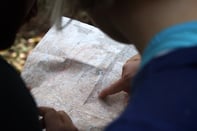Published on
Realizing Transformation through Structural and Cultural Change: Defining and Pursuing the Vision

In 2017, the University of British Columbia transformed Continuing Studies to UBC Extended Learning, mandated to meet the needs of 21st-century learners as part of its Career and Personal Education (CPE) strategy. This transformation didn’t happen overnight: it has been the result of nearly six years of strategic development, alignment building, and implementation.
In this, the first installment of a two-part interview, Hugh Brock outlines the structural challenges that the university had to confront in order to realize its vision of a CPE unit that draws on the strengths of a centralized administration and decentralized Faculties.
The EvoLLLution (Evo): Why did the University of British Columbia (UBC) decide to restructure its approach to continuing and extended education?
Hugh Brock (HB): The previous president of UBC saw Career and Professional Education (CPE) as a model for the future of the university, bringing UBC excellence to the community while providing learners with the education they want, how they want, and when they want it. As he pointed out, UBC simply wasn’t keeping pace with its competitors in this regard. We’re ranked among the top forty universities globally, and to maintain that competitive status we need to ensure that all of our offerings meet our overall standard of excellence. We were missing a great opportunity to realize CPE’s economic and educational potential to serve learners and bring UBC excellence to the community.
Evo: What are some of the characteristics of CPE at competitor schools that UBC identified and is trying to exceed, especially when it comes to non-traditional students?
HB: The non-traditional audience is all about access, convenience and flexibility. UBC lags behind in offering online and intensive offerings to meet those needs. Up to now, students have had to come to UBC for education that takes anywhere from days to years to deliver, but busy professionals just don’t have the time to break from their lives, their families and their jobs to pursue education in such an intensive way.
We need to make ourselves more accessible to students, rather than expect students to be accessible to us. Changing that mindset can be a real challenge to a traditional institution.
Like other progressive institutions, we need to offer more online programming with greater flexibility; develop smaller, more agile credentials and stackable degrees; and engage with industry to develop courses that respond to economic and societal needs.
Evo: This process has been going on at UBC for about a year. In that time, what steps have you taken to make this institution-wide vision of extended education a reality?
HB: We started working on this project in 2013 and had a fully developed strategy by 2014. It has taken so long to execute on that strategy because it’s taken time to get institutional buy-in from the University Senate, Board, Executives and Deans. So, the first major step we had to undertake was getting that buy-in through a long process of alignment building, strategy building, and getting agreements in principle on policy, procedures, and allocation or revenue. At the same time, we had to plan for operational and infrastructure support.
If you look back as recently as three years ago, 70 percent of what would be considered CPE at UBC was performed by Faculties, while only 30 percent was in Continuing Studies. Continuing Studies was isolated from the rest of the university, and as a result it did not draw on the university’s best resources: the faculty who have the creativity, knowledge, pedagogy and research to raise CPE to UBC’s standard of excellence.
In essence, our strategy lay in figuring out how to formally partner Continuing Studies with individual Faculties so that non-traditional students could access that same well of support and educational excellence that traditional students were drawing on every day.
The major roadblock in this regard was gaining Faculty buy in. Each time we broached the subject of continuing education we’d get the same response: faculty members wanted to better reach the community, but didn’t have the bandwidth to deal with the administrative overhead that continuing education entails, on top of their teaching and research responsibilities. Collecting payment, arranging accommodation, arranging recreational trips, getting CPE students library passes, running their teaching plans by the Senate and Board—all this takes more time than faculty members have got in a day.
We needed to figure out how to incentivize Faculties to take on continuing education, and the best way to do that was by providing support networks for dealing with that administrative overhead. Determining what those support networks will look like, how we can make this process as streamlined as possible so that CPE isn’t a burden, and ensuring that Faculties are incentivized to offer CPE.
The other major challenge we faced was dealing with the existing culture and preconceptions surrounding Continuing Studies at UBC. Prior to this process, Continuing Studies was viewed as a separate, independent entity from the university itself, with a mandate that largely focused on community engagement rather than community education. It was mandated to become a full cost-recovery unit by Senate in 1990, but did not shift from its community engagement focus.
The hardest part about any organizational change is that culture eats strategy for lunch and it can be difficult to dislodge preconceived notions. We wanted the university as a whole to see CPE as a key player, contributing to the university financially and culturally. Changing institutional preconceptions about CE was a challenge, but we’ve made significant strides in that direction.
Evo: So one of the goals of this process is to decentralize the academic functions of serving non-traditional students, leaving Faculties to deal with the academic programming, while centralizing the management, administration and registration of non-traditional programs?
HB: That’s the end goal of this process, yes. We’re not there yet.
The University Act of British Columbia states that Faculties are the only academic units that can hold academic programs, so Faculties administer all credit programming at UBC. They’re starting to turn their focus to non-credit programming because they’re beginning to realize that non-credit offerings can ladder and thus recruit students into credit programming.
For now, the bulk of our non-credit offerings live in the former Continuing Studies, now rebranded Extended Learning. Our plan is to arrive at a state where we’ve decentralized the academic oversight and teaching of serving non-traditional learners while centralizing the administrative and operational side of things, but we’re still many years getting to where we hope to be.
The other point I’d like to make is that all Faculties offer their CPE, or Continuing Professional Development, and they do it quite well. The Sauder School of Business is a model for the whole of UBC how to offer student and market-focused CPE program. After all, they know how to run a business better than any other part of the university, and we can learn a lot from how they manage continuing education.
Evo: What are some of the obstacles standing in the way of reaching that balance between centralized management and decentralized programming?
HB: We are in need of a CRM system that ties all of our student information and disparate faculties together, and will be receiving one in 2020. In the university of the future, we might see an individual as a high-school student, a degree student, a master’s student, a CPE student and a returning general-interest learner. It would be great to be able to offer that individual a consistent experience throughout, so that when someone returns we can say, “It’s great to see you, Samantha, thank you for coming back to UBC.” This stems from a central piece of business best practice: It’s easier to keep the customers you have rather than find new ones.
The second obstacle lies in incentivizing departments and faculties to buy into CPE. The unfortunate thing about revenue-generating programs is that everyone wants a piece of the pie. Central administration wants some, the deans want some, the department wants some, and then there’s nothing left for the people actually doing the work, which is a major disincentive.
Cost-containment is another key area. You can only generate enough revenue to keep the university going if you’ve got the right product in the right market, with the right price, but universities aren’t used to thinking in those terms. Universities have to refocus their financial approach to continuing education, to the point where they’re comfortable making a worthwhile investment into continuing education, while still nimble enough to respond to changes in the market. To do this, they must be informed enough to make good choices, and tough enough to fail fast/learn fast and cut losses.
These are all obstacles I’ve encountered not only at UBC but at all the universities I’ve been associated with, because universities are slow moving. A few years ago, only one out of five programs for non-traditional learners in Continuing Studies succeeded. No full cost-recovery unit can survive with a 20-percent success rate. Universities have to be tougher a lot earlier, from selecting what programs should be developed, calling it quits earlier, experimenting with online non-credit courses first to test actual demand and acceptance before offering more expensive to develop, and thus higher risk, program, and to be rigorous in developing programs that respond to current market needs.
The final obstacle I want to bring up comes back to university culture. Universities are conservative places. The very fact that we call them “non-traditional learners” as opposed to, simply, learners, underlines that fact. There’s not yet full acceptance of the value of CPE in the university, and that’s a cultural shift that’s necessary to the survival of CPE programs.
This interview has been edited for length and clarity.
Author Perspective: Administrator


